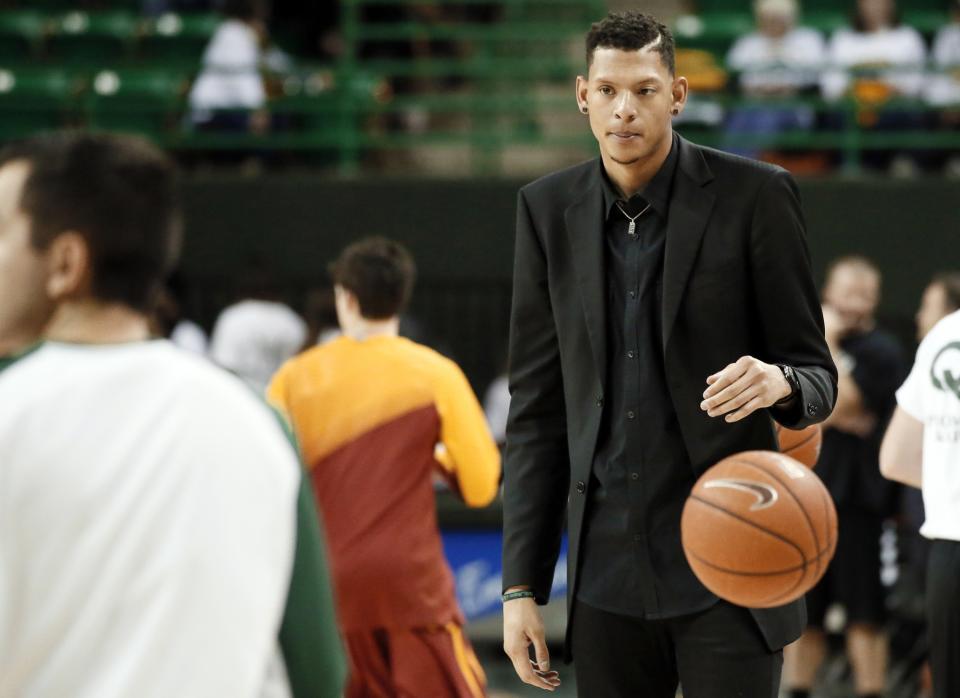Once sidelined by rare disorder, Isaiah Austin gets new shot at NBA dream

Four days before the 2014 NBA draft, Isaiah Austin had his childhood dream snatched away from him. Nearly 2 1/2 years later, though, he’s been given a second chance to make that dream come true.
[Join a Yahoo Daily Fantasy Basketball contest now | Free NBA Yahoo Cup entry]
The former Baylor center was projected by many to be a late first-round or early second-round pick in the 2014 draft — a 7-foot-1 shot-blocker who wasn’t an explosive athlete, but who was skilled enough to perhaps find a niche as an NBA contributor despite being legally blind in his right eye. But then, pre-draft medical testing revealed that Austin has Marfan syndrome, a genetic disorder that affects the connective tissues that hold together all of the body’s cells and organs.
The disorder affects one in roughly every 5,000 people, and one of its most troublesome outcomes deals with the enlargement of the arteries of the heart. Doctors feared that the standard level of exertion that comes with playing professional basketball could cause those arteries to rupture, endangering Austin’s life; thus, while he was still invited to the draft and, in a moving gesture, officially selected by NBA Commissioner Adam Silver, his career was over before it started.
Until now.
In an interview with Cassy Athena, Austin revealed Wednesday that he has been medically cleared to return to playing basketball, and that he intends to do whatever he can to make it into the NBA.
“Ever since the draft, I’ve been getting checked by my doctor, David Liang at Stanford, for about 2 1/2 years now,” Austin said. “And through those checkups, we’ve been monitoring my heart, making sure that nothing has changed, and he said that I’m stable. So, I’ve been able to work out a little bit here and there, and the first year and a half, he didn’t really want me doing too much because he still wanted to monitor my heart and everything.
“But I would say about four months ago, I was in Minnesota, he cleared me, and labeled me stable. So I’m able to make the choice if I want to go back and pursue my dream again. I am cleared. I am about to be out here pursuing my dream.”
Where and with whom Austin will do so remains to be seen. While his reported clean bill of health is certainly a great start, he’ll need to convince NBA teams’ medical staffs that there is absolutely zero chance of an adverse cardiac incident with him playing — which, as we’ve seen in the ongoing saga between Chris Bosh and the Miami Heat, is no easy feat. He’ll also need to convince front-office decision-makers that he’s worth a flyer after more than two years away from competitive ball.
[Follow Dunks Don’t Lie on Tumblr: The best slams from all of basketball]
That might be a challenge, but Austin’s combination of size, length, mobility, shot-blocking and touch — he shot 31 percent from the college 3-point line on 2.1 attempts per game over two seasons at Baylor — could make him an intriguing prospect in a league moving at breakneck speed toward lineups that require big men to create space on offense and defend in space on defense. Either way, it clearly won’t be the largest challenge Austin has faced in his path thus far.
“If you just look where I started from — in the eighth grade, I had a retina tear,” he said. “I had four emergency surgeries and lost my vision by the time I was a junior in high school. I wasn’t supposed to be able to still play basketball. By the time I was a senior, I graduated top-three in my class in the country. I had my choice to go to any university I wanted to go to to play basketball.
“[…] When I decided I wanted to come out [in the draft] after my freshman year, I tore my shoulder in a workout, just randomly,” Austin continued. “So I came back to Baylor. I shared my story. Nobody knew that I was playing blind in my right eye. I shared my story with the world, and just the impact that I had with so many people around the world, it just inspired me to want to inspire more and more people. When I found out about me not being able to play anymore with Marfan syndrome, it was kind of like God had prepared me for all this, you know?”
Two years ago, Austin said that his ordeal taught him not “to take anything for granted, because it can be ripped away from you in seconds.” Now that he’s been given a second chance, he sounds eager to enjoy every second of it.
“I’m doing this off of pure joy, man,” he said. “Basketball brings me so much joy, and I feel like my testimony will help so many people around the world.”
More NBA coverage:
– – – – – – –
Dan Devine is an editor for Ball Don’t Lie on Yahoo Sports. Have a tip? Email him at devine@yahoo-inc.com or follow him on Twitter!
Stay connected with Ball Don’t Lie on Twitter @YahooBDL, “Like” BDL on Facebook and follow Dunks Don’t Lie on Tumblr for year-round NBA talk, jokes and more.

 Yahoo Sports
Yahoo Sports 

